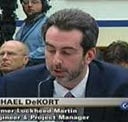Now Argo AI declares they are “driverless” with no significant proof of capabilities
Here is the announcement — https://www.argo.ai/company-news/argo-ai-begins-driverless-vehicle-operations-in-miami-austin/
The key misleading hype
Working with TÜV SÜD, a world-leading safety organization
In the preparation for operations of driverless test vehicles, Argo measured autonomy performance and safety requirements against industry best practices. Argo then proactively approached TÜV SÜD, a world-leading independent technical service provider and certification body with extensive experience assessing automated vehicle technology, to conduct a third-party review. Upon completion of the vehicle hazard analysis, safety concept, safety analyses and operational requirements, TÜV SÜD visited Argo’s test track facilities in western Pennsylvania for final validation testing.
The assessment is based on the four layered TÜV SÜD Automated Vehicle Framework, an established, federally-recognized process in Germany, which is closely aligned with US DOT’s Guidance on AV Safety.
In addition, last year, Argo also became the first autonomous vehicle technology developer to receive third-party validation by TÜV SÜD for test driver selection, training, and oversight procedures. The assessment confirmed that Argo meets, and in some cases exceeds, industry best practices and standards as outlined by Autonomous Vehicle Safety Consortium’s (AVSC) best practices and SAE International’s J3018 standard for safe on-road testing.
Just like Waymo, Cruise and Gatik, Argo AI is saying their systems are driverless. No human in the car as a safety or backup driver. (There is no mention of a remote operator.) In this case Argo has a partner in crime, TUV SUD. That is supposed to signal the “driverless” claim has been proven. The statement then rattles off frameworks, process etc. NONE of these is anything close to a driver’s test, especially for an AV that uses machine, deep or general learning. In the US there is nothing close to a driver’s test. I know this because The SAE ORAD V&V Task Force I am a part of is nowhere near done. (I think the reason for this is the industry knows everyone would fail it if it was even moderately competent.) The EU just released a very good draft of their driver’s test. While it has some gaps I discuss in my article below, it is very good. So good NONE of the folks who say they are driverless of L4 would come close to passing. And we would all see the data proving it. (A link to that draft is in my article below.)
The statement also mentions a test track in Pennsylvania was used. (And there is no mention of what was accomplished in simulation or how its models and real-time were verified.)
The issue here is not that no testing was done. It is that nothing significant was done. But we are supposed to think it was. Of course, nothing has been released for us to see. Nothing on scenarios and objects tested, especially relevant crash and edge cases. I am pretty sure that if anyone could pass a test, even if it was only shown to be 2X a human, they would seek the light and do so. That would go a long way to raising the dismal levels of trust out there. And help them differentiate themselves from competitors.
Now we wait to see who is next. Motional? Mobileye?
Below are a couple articles that explain my POV in more detail.
The EU proposes a driverless driver’s test that is pretty good — Waymo, Cruise, Gatik etc would fail it
How are Waymo and Cruise “Fully Driverless” Vehicles Legal?
· https://imispgh.medium.com/how-are-waymo-and-cruise-fully-driverless-vehicles-legal-5a25a495fdf1
Waymo and the industry can now legally hide proof their systems are not driverless or safe
By not providing any meaningful proof of being driverless, even fighting doing through a lawsuit, Waymo, Cruise and Gatik are misleading the public, putting their lives at risk, and collapsing
The Autonomous Vehicle Industry can be Saved by doing the Opposite of what is being done now to create this technology
How the failed Iranian hostage rescue in 1980 can save the Autonomous Vehicle industry
My name is Michael DeKort — I am Navy veteran (ASW-C4ISR) and a former system engineer, engineering, and program manager for Lockheed Martin. I worked in aircraft simulation, the software engineering manager for all of NORAD, a software project manager on an Aegis Weapon System baseline, and a C4ISR systems engineer for DoD/DHS and the US State Department (counter-terrorism). And a Senior Advisory Technical Project Manager for FTI to the Army AI Task Force at CMU NREC (National Robotics Engineering Center)
Autonomous Industry Participation — Air and Ground
- Founder SAE On-Road Autonomous Driving Simulation Task Force
- Member SAE ORAD Verification and Validation Task Force
- Member UNECE WP.29 SG2 Virtual Testing
- Stakeholder USDOT VOICES (Virtual Open Innovation Collaborative Environment for Safety)
- Member SAE G-35, Modeling, Simulation, Training for Emerging AV Tech
- Member SAE G-34 / EUROCAE WG-114 Artificial Intelligence in Aviation
- Member Teleoperation Consortium
- Member CIVATAglobal — Civic Air Transport Association
- Stakeholder for UL4600 — Creating AV Safety Guidelines
- Member of the IEEE Artificial Intelligence & Autonomous Systems Policy Committee
SAE Autonomous Vehicle Engineering magazine editor calling me “prescient” regarding my position on Tesla and the overall driverless vehicle industry’s untenable development and testing approach — (Page 2) https://assets.techbriefs.com/EML/2021/digital_editions/ave/AVE-202109.pdf
Presented the IEEE Barus Ethics Award for Post 9/11 DoD/DHS Whistleblowing Efforts
